
How to Clean Stainless Steel
Stainless steel is a staple material in commercial kitchens, and for good reason. Its durability, resistance to corrosion, and sleek appearance make it a popular choice for countertops, appliances, utensils, and cookware. In fact, stainless steel is everywhere in commercial kitchens - from prep tables to sinks to shelving units.
What Is Stainless Steel?
Stainless steel is an alloy of iron, carbon, and a minimum of 10.5% chromium, which forms a thin layer of chromium oxide on the surface that protects the metal from rust and corrosion. If stainless steel is so durable, why does it require special cleaning? Even though stainless steel is highly resistant to corrosion, the protective coating can become damaged. That's why it's important to clean stainless steel correctly and avoid certain cleaners. We'll explain proper cleaning in more detail below.
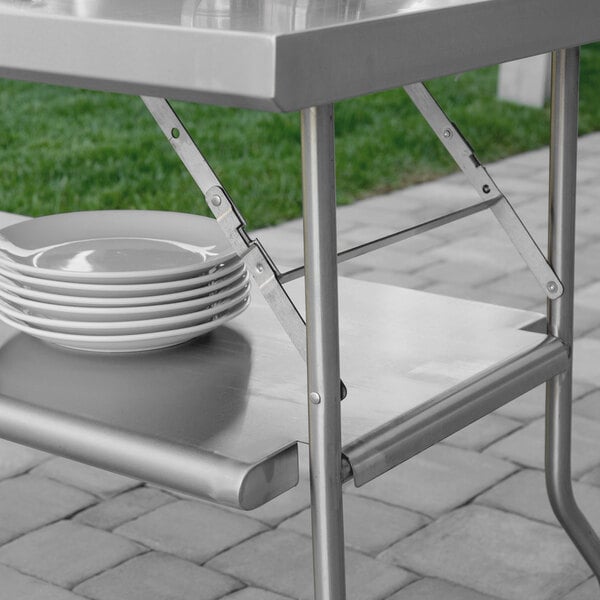
Types of Stainless Steel
The most common types of stainless steel used in foodservice equipment and appliances are 304 and 316. Type 304 stainless steel is suitable for most foodservice applications, offering good resistance to corrosion and staining. Type 316 stainless steel is even more corrosion resistant and is ideal for environments with high chloride exposure, such as near the coast or in areas with harsh cleaning chemicals. Both types of stainless steel are easy to clean and maintain, making them essential materials for commercial kitchens.
Best Way to Clean Stainless Steel
Whether you're working with cookware or a prep table, the best way to keep stainless steel clean is to avoid damaging the protective layer. Keep these three things in mind when you are cleaning your stainless steel tables, equipment, and cookware:
- Avoid Mechanical Abrasion: Avoid using any cleaning tools that can scratch the steel's surface including steel wool, wire brushes, and scrapers.
- Remove Deposits and Water: Hard water and food deposits left sitting on the surface will leave water spots and can break down the layer of protection.
- Don't Use Cleaners with Chlorides: When choosing cleaning chemicals for stainless steel, avoid solutions that contain chlorides. These cleaners can lead to pitting and staining on the stainless steel, compromising its durability and appearance. It is recommended to use non-chloride cleaners specifically designed for stainless steel to maintain its longevity and shine.
Proper cleaning of stainless steel equipment can prolong its lifespan, saving you money in the long run. You'll prevent the risk of corrosion and staining, preserving the aesthetic appeal of your kitchen equipment. Maintaining a clean and hygienic kitchen is also essential for food safety and customer satisfaction.
How to Clean Stainless Steel Tables and Equipment
Knowing how to clean stainless steel effectively not only ensures a safe and sanitary kitchen environment but also helps you protect your investment in high-quality equipment. We'll outline some tips and tricks for keeping your stainless steel shining bright and germ-free.
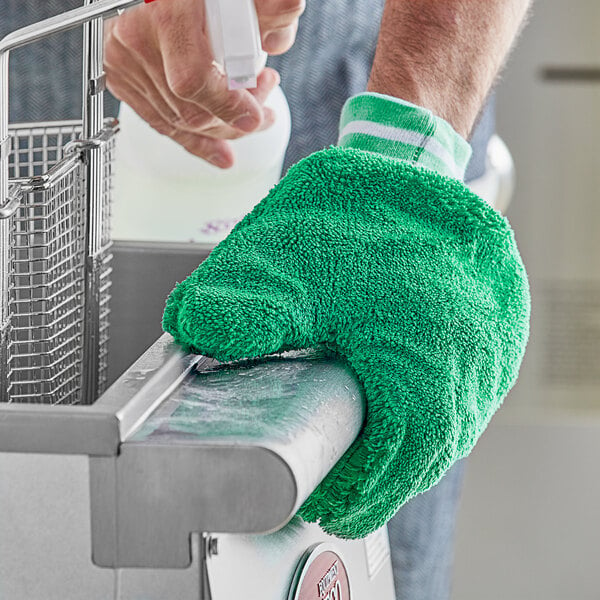
- Gather Your Supplies: Before starting the cleaning process, make sure you have all the necessary supplies on hand. You will need a mild detergent or stainless steel cleaner, microfiber cloths, a soft-bristled brush, and warm water.
- Remove Food Residue: Start by removing any food residue or debris from the surfaces of the equipment. Use a soft-bristled brush to gently scrub away any stuck-on food particles.
- Clean with Detergent: Mix a small amount of mild chloride-free detergent with warm water to create a cleaning solution. Dip a microfiber cloth into the solution and wipe down the stainless steel surfaces of the equipment.
- Always Wipe with the Polish Lines: Stainless steel has a "grain" that runs in one direction. If you can see the lines, it's always best to scrub or wipe with the grain.
- Rinse Thoroughly: After cleaning, rinse the equipment thoroughly with clean water to remove any soap residue. This step is crucial to prevent streaking and ensure a clean finish.
- Dry the Surface: Use a dry microfiber cloth to dry the surfaces of the equipment completely. Never let water stand on your stainless steel surfaces for extended periods. This will prevent water spots and hard water deposits.
- Sanitize: After the surface has been cleaned, you can apply a food-safe sanitizer. Opt for a sanitizer that is specifically formulated for stainless steel to avoid any potential damage or discoloration. Apply the sanitizer to the entire surface and allow to air dry. Do not rinse or wipe the sanitizer off of the cleaned surface.
How to Remove Rust from Stainless Steel Equipment
Even with the proper cleaning and care, rust spots can occur over long periods. Follow the steps below to help restore your stainless steel products.
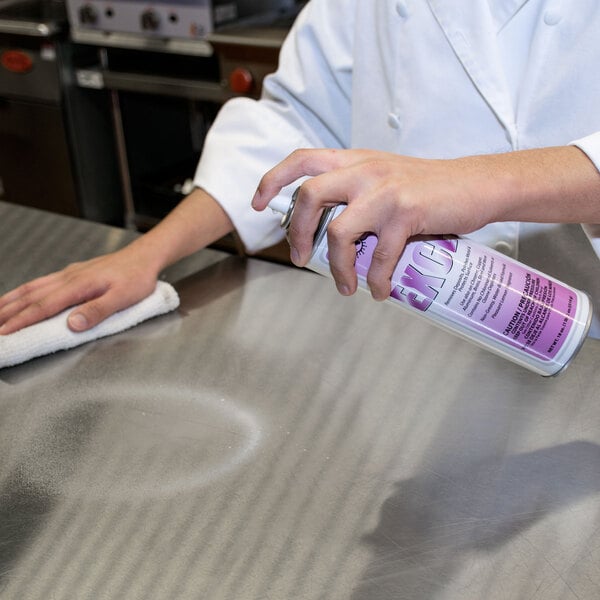
- Determine the Cause: Rust can be caused by mechanical abrasions, food deposits, water, or chlorides/chemicals. If you know the cause, you can train your staff to prevent the issue in the future.
- Use a Scratchless Pad: Gently brush away the rust with a scratchless pad. Don't apply any moisture or chemicals to the pad - just use the pad on the metal and rub with the grain. If you're afraid of scratching the surface, test the pad in a small, hidden spot on the table or equipment.
- Apply a Cleaning Paste: Use a powder like Bar Keepers Friend and apply it with a soft cloth or microfiber towel to the affected area. Dampen a separate area of the towel and remove any excess paste or powder.
- Rinse Thoroughly: Once you have removed the rust, rinse the stainless steel surface thoroughly with clean water.
- Dry Completely: After rinsing, dry the stainless steel equipment or table completely with a clean, dry cloth. This will help prevent water spots and maintain the appearance of the stainless steel.
- Apply a Protective Coating: To eliminate the risk of future rust, consider applying a protective coating or stainless steel polish to the equipment or table. This will help to maintain the stainless steel's shine and protect it from rust in the future.
By following these steps, you can effectively remove rust from stainless steel equipment or tables and keep them looking clean and well-maintained.
How to Clean Stainless Steel Cookware
Stainless steel cookware is a popular choice in commercial kitchens due to its durability, non-reactive surface, and sleek appearance. To maintains its shine and functionality, regular cleaning is essential. We recommend cleaning stainless steel pots and pans in a three-compartment sink instead of a commercial dishwasher. Follow these steps to effectively clean your stainless steel cookware:

- Preparation: Before starting the cleaning process, make sure the cookware is cool to the touch. Remove any food remnants or residue using a soft-bristled brush or a non-abrasive scrubbing pad.
- Hand Wash with Warm Soapy Water: Fill the sink or a large basin with warm water and add a mild dish soap. Submerge the stainless steel cookware in the soapy water and use a soft sponge or cloth to gently scrub the surface. Avoid using abrasive cleaners or steel wool, as they can scratch the stainless steel.
- Rinse Thoroughly: Once you have removed all the food particles and grease, rinse the cookware thoroughly with clean water to remove any soap residue.
- Dry Immediately: After rinsing, use a clean, dry cloth to wipe the cookware dry. Leaving stainless steel cookware to air dry can cause water spots and streaks to form on the surface.
- Removing Stubborn Stains: For tough stains or burnt-on food, create a paste using baking soda and water. Apply the paste to the stained areas and let it sit for a few minutes before gently scrubbing with a soft sponge. Rinse thoroughly and dry as usual.
- Polishing: To restore the shine of your stainless steel cookware, you can use a stainless steel cleaner or polish. Apply a small amount of the cleaner to a soft cloth and buff the surface in circular motions until the cookware shines.
- Avoid Harsh Chemicals: To maintain the integrity of your stainless steel cookware, avoid using harsh chemicals, bleach, or abrasive cleaners that can damage the surface. Stick to mild dish soap and non-abrasive cleaning tools.
- Storage: After cleaning and drying your stainless steel cookware, store it in a dry and well-ventilated area to prevent moisture buildup and tarnishing.
By following these steps and maintaining a regular cleaning routine, you can keep your stainless steel cookware looking like new and ensure its longevity in your commercial kitchen.
Maintaining clean stainless steel surfaces in a commercial kitchen is crucial for several reasons. Proper cleaning helps prevent the buildup of bacteria and other harmful pathogens, ensuring food safety and compliance with health regulations. Regular cleaning protects stainless steel from corrosion, staining, and pitting, prolonging its lifespan and preserving its aesthetic appeal. By implementing the correct cleaning procedures, commercial kitchens can create a hygienic environment and extend the durability of their stainless steel equipment.
Related Resources
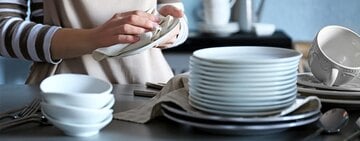
Restaurant Cleaning Checklist
Cleaning, sanitizing, and disinfecting are incredibly important in the foodservice industry to prevent cross-contamination and the spread of viruses. But, with so many things to clean in a restaurant, it can be difficult to remember all of the individual cleaning tasks that you need to take care of and how regularly you need to clean your equipment. To lessen the burden, we created this restaurant cleaning checklist that your employees can use to keep track of the cleaning tasks that need to be completed. Pair this commercial kitchen cleaning checklist with our wide selection of restaurant cleaning supplies . Click below for our downloadable restaurant cleaning checklist PDF that your employees can use as they're cleaning. Printable Cleanin
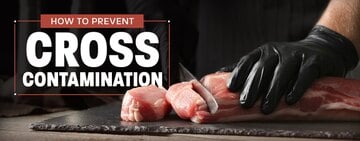
How to Prevent Cross-Contamination
Cross-contamination occurs when harmful bacteria is transferred to foods, which can result in serious health risks like food poisoning or unintended exposure to food allergens. If your kitchen staff members know how to prevent cross-contamination by correctly storing and preparing food, you can save the time and money that would be wasted on improperly handled food. By making the effort to separate your foods while storing and preparing them, sanitizing your kitchen surfaces and equipment , and practicing proper personal hygiene, you can create a kitchen environment that follows food safety guidelines . What is Cross-Contamination? Cross-contamination occurs when disease-causing microorganisms, like bacteria and viruses, are transferred fro

Knife Safety Tips
Knife safety is of utmost importance in any commercial kitchen. Improper handling and usage of knives can lead to serious accidents and injuries. We will explore essential knife safety tips that every professional chef and kitchen staff should be aware of. By following these guidelines, you can enforce restaurant safety protocols in your kitchen while minimizing the risk of accidents. Use these links to learn more about knife safety: Use a Sharp Knife Choose the Right Knife for the Task Know the Proper Knife Cutting Techniques Use Caution When Handling a Knife Keep Your Knives Clean Store Your Knives Correctly Kitchen Knife Safety From " avocado hands " to cuts while washing knives, lacerations from chef knives are one of the most common in
- Topics 1346
- Industrial 55
- Troubleshooting Guides 21
- Restaurant Management 128
- Bar Management 55
- Catering Tips 35
- Bakery Management 42
- Food Trucks & Concessions 49
- Advertising & Marketing 37
- Eco-Friendly Tips 11
- Facility Layout & Design 41
- Coffee Shop Tips 28
- Installation & Maintenance 51
- Janitorial & Pest Control 30
- Safety & Sanitation 88
- Startup Tips 104
- Menu Design 10
- Kitchen & Cooking Tips 81
- Hospitality Management 23
- Pizza & Sandwich Shop Tips 36
- Smallwares 37
- Food Prep 88
- Tabletop Items 17
- Disposables 22
- Calculators & Tools 6
- Consumables 52
- Warewashing & Laundry 18
- Cooking Equipment 90
- Food Storage & Refrigeration 51
- Beverage Equipment 34
- Office Supplies 6
- Resource Type
- In-Depth Articles272
- Buying Guides296
- How-Tos93
- Product Reviews77


